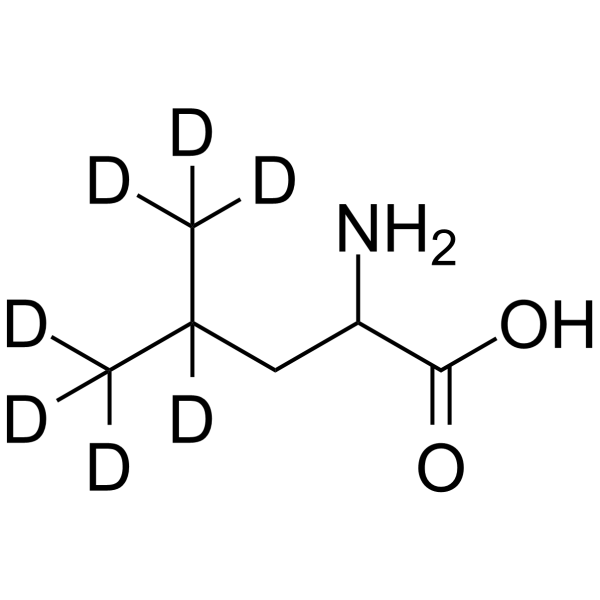(4,5,5,5,5',5',5'-2H7)Leucine
Modify Date: 2024-01-09 17:08:08

(4,5,5,5,5',5',5'-2H7)Leucine structure
|
Common Name | (4,5,5,5,5',5',5'-2H7)Leucine | ||
|---|---|---|---|---|
| CAS Number | 259225-40-6 | Molecular Weight | 138.22 | |
| Density | 1.0±0.1 g/cm3 | Boiling Point | 225.8±23.0 °C at 760 mmHg | |
| Molecular Formula | C6H6D7NO2 | Melting Point | 293-296ºC (subl.)(lit.) | |
| MSDS | N/A | Flash Point | 90.3±22.6 °C | |
Use of (4,5,5,5,5',5',5'-2H7)Leucine(±)-Leucine-d7 is the deuterium labeled (±)-Leucine. (±)-Leucine (DL-Leucine), an isomer of Leucine, chemosterilant and dietary additive. (±)-Leucine inhibits growth of Escherichia coli HfrH by 92.08%[1]. |
| Name | dl-leucine-4,5,5,5,6,6,6-d7 |
|---|---|
| Synonym | More Synonyms |
| Description | (±)-Leucine-d7 is the deuterium labeled (±)-Leucine. (±)-Leucine (DL-Leucine), an isomer of Leucine, chemosterilant and dietary additive. (±)-Leucine inhibits growth of Escherichia coli HfrH by 92.08%[1]. |
|---|---|
| Related Catalog | |
| In Vitro | Stable heavy isotopes of hydrogen, carbon, and other elements have been incorporated into drug molecules, largely as tracers for quantitation during the drug development process. Deuteration has gained attention because of its potential to affect the pharmacokinetic and metabolic profiles of drugs[1]. |
| References |
| Density | 1.0±0.1 g/cm3 |
|---|---|
| Boiling Point | 225.8±23.0 °C at 760 mmHg |
| Melting Point | 293-296ºC (subl.)(lit.) |
| Molecular Formula | C6H6D7NO2 |
| Molecular Weight | 138.22 |
| Flash Point | 90.3±22.6 °C |
| Exact Mass | 138.138565 |
| PSA | 63.32000 |
| LogP | 0.73 |
| Vapour Pressure | 0.0±0.9 mmHg at 25°C |
| Index of Refraction | 1.463 |
| Storage condition | -20C |
| Leucine-4,5,5,5,5',5',5'-d |
| (4,5,5,5,5',5',5'-H)Leucine |